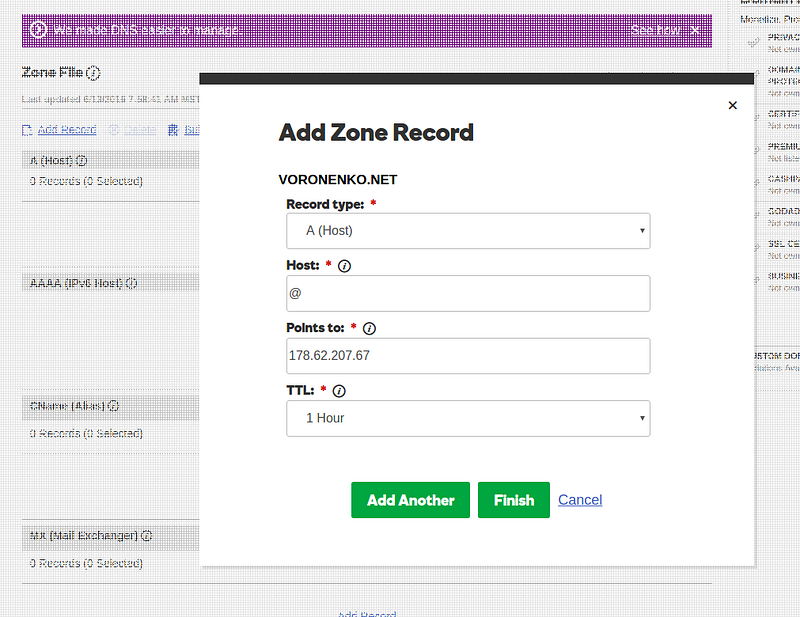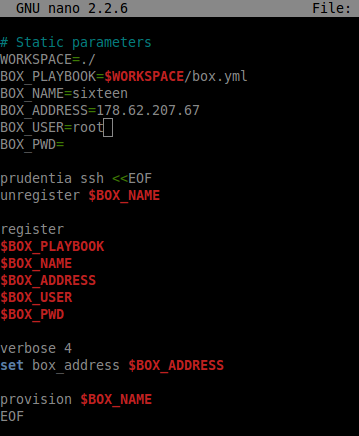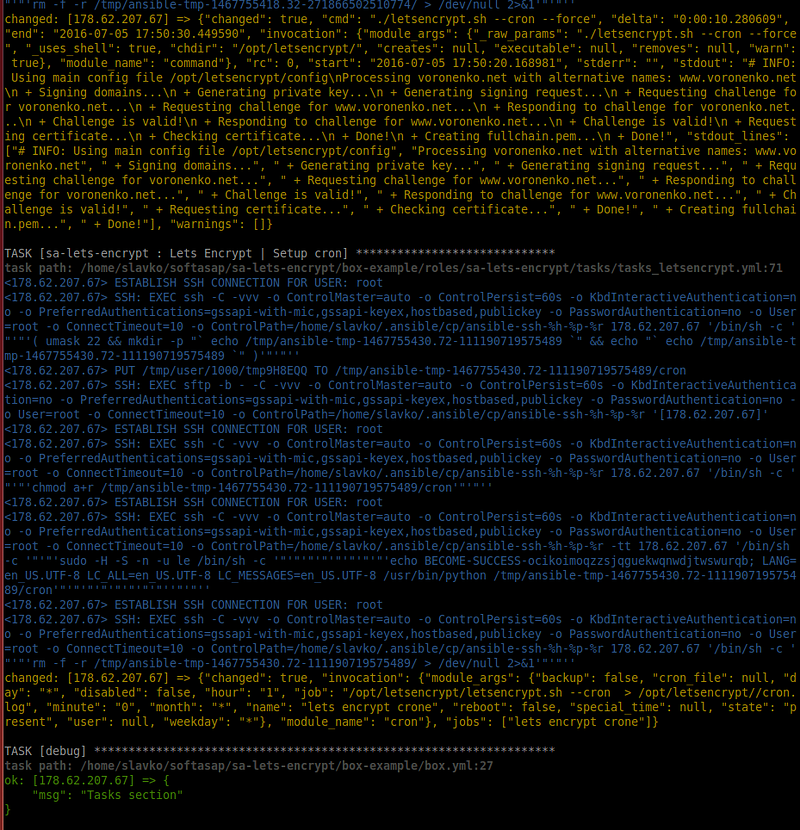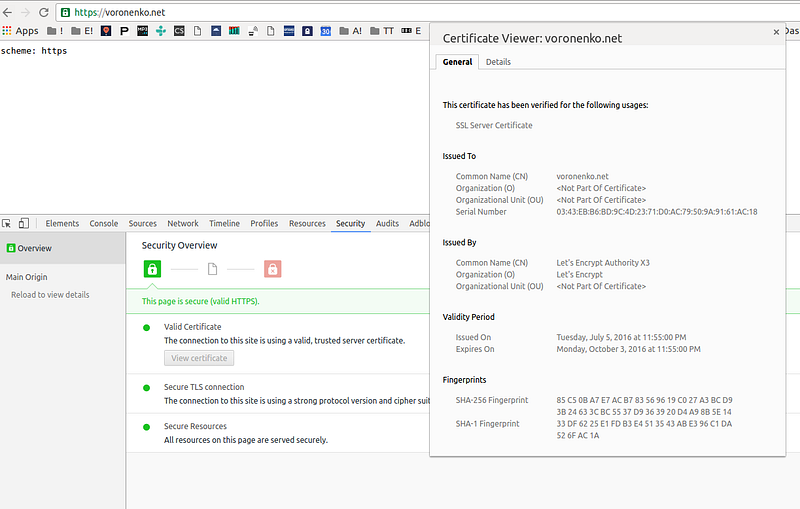Automating SSL Encryption for Your Servers with LetsEncrypt and Ansible¶
Let’s Encrypt is probably one of the
most well-known authority supplying free green seal certificates. In
this article, I will share how I make use of letsencrypt as part of
a server’s provisioning process.
I have tried out a wide range of clients for Let’s Encrypt: certbot-auto, letsencrypt-cli, simple_le, and few other from Let’s Encrypt‘s client list.
However, my number one choice, at least for now, is: https://github.com/lukas2511/letsencrypt.sh. If I were to describe tge client in a few words, it’d simply be: “it just works.”
I use Ansible for my automation scenarios and have wrapped letsencrypt.sh into a role play at https://github.com/softasap/sa-lets-encrypt
Here’s an example of using existing installations, assuming you have
existing website — you specify what domain names you plan to use and the
path to the nginx config:
- hosts: dev
vars:
- root_dir: "{{playbook_dir}}"
- my_domains:
- {
names: "voronenko.net www.voronenko.net",
nginx_config: "/etc/nginx/sites-available/voronenko_net"
}
pre_tasks:
- debug: msg="Pre tasks section"
roles:
- {
role: "sa-lets-encrypt",
le_domains: "{{my_domains}}",
option_run_once: true,
option_setup_cron: true
}
tasks:
- debug: msg="Tasks section"
This is longer example of a new installation — you install nginx, configure your website, and apply letsencrypt play.
---
- hosts: www
vars:
- root_dir: "{{playbook_dir}}"
- my_domains:
- {
names: "voronenko.net www.voronenko.net",
nginx_config: "/etc/nginx/sites-available/voronenko_net"
}
pre_tasks:
- debug: msg="Pre tasks section"
roles:
- {
role: "sa-nginx"
}
- {
role: "sa-include",
include_file: "{{root_dir}}/demosite.yml"
}
- {
role: "sa-lets-encrypt",
le_domains: "{{my_domains}}",
# le_ca: "https://acme-staging.api.letsencrypt.org/directory",
option_run_once: true,
option_setup_cron: true
}
tasks:
- debug: msg="Tasks section"
Refer to the standalone example in the box-example folder.
Digital Ocean¶
Here’s what the result will look like for an example in DigitalOcean — you get the clean OS:

SSL encryption
Once the droplet is ready, configure the DNS for it.

SSL encryption
GoDaddy¶
See the example below for GoDaddy:

SSL encryption
Ping the host to ensure that the DNS was successfully propagated.

SSL encryption
Adjust play to specify box address.

Wait for provisioning to complete.

SSL encryption
How letsencrypt.sh works¶
Take a look at how letsencrypt.sh works.
It creates links to the current certificates so you can safely refer
them from the nginx config. Role installs cron job to ensure that
the certificate is updated before it expires. However, you would need to
reload your webserver in case the underlying certificate has been
updated.

SSL encryption
Now you can safely refer to the SSL certificates in your web config.

ssl encryption
Check the Seal¶
Last step — check for the green sealed certificate in the browser.

SSL encryption
That’s it!
If you’re using other web servers, your PRs and comments are always welcomed.